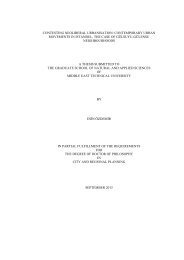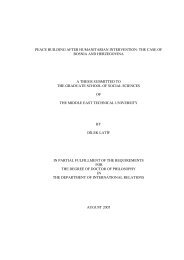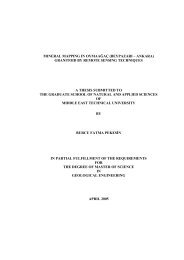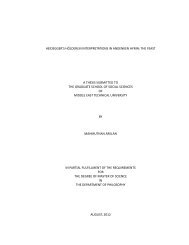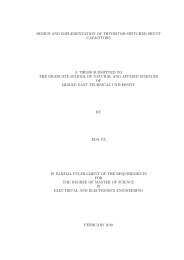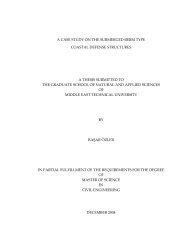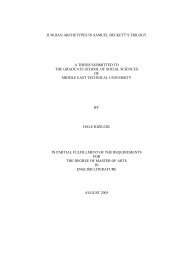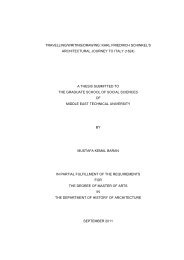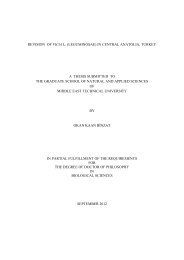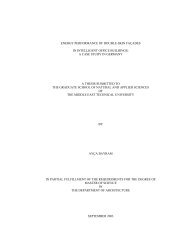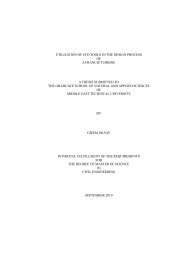View Original - Middle East Technical University
View Original - Middle East Technical University
View Original - Middle East Technical University
Create successful ePaper yourself
Turn your PDF publications into a flip-book with our unique Google optimized e-Paper software.
Strictly inflationary or disinflationary forms of financial crisis should not, thereby, be<br />
a subterfuge for otherwise social and political patterns of credit<br />
decentralisation/centralisation in monetary economies. As such, fractionated or<br />
homogenous monetary systems are plain ideal categories; and are indelibly<br />
counterfactual in terms of the monetary history of capitalist economies. In fact,<br />
financial crises are not about the degree of inflation or disinflation in a monetary<br />
system but about the politics of debt through which inflationist or disinflationist<br />
design of monetary restructuring vis-a-vis the disproportionalities of capitalist<br />
production politically institute either a crisis fix or a vicious cycle, which would not,<br />
however, in the meantime rescind the monetary form of realisation. Paramount to<br />
such a theory of money, is exactly an analysis of those vicious cycles and exits from<br />
crises since both debtor-led and creditor-led restructuring of credit, though these are<br />
de novo theoretically indeterminate political strategies, can anticipate a de-centering<br />
of money solidarity in a bourgeouis economy. In these terms, an inflationary<br />
monetary crisis is an upshot of debtor-led centralisation of credit; that is, each<br />
commodity would earn its monetary counterpart regardless of the proverbial<br />
realisation of surplus value. Here money is no longer invidious; it is a mundane and<br />
lenient asset. Yet, in a credit hierarchy, such restructuring is always piecemeal and<br />
partial. In fact, John Grahl notes that ‘crisis is seen as running through distinct phases<br />
with differing macroeconomic characteristics’(2000:296). In a vicious cycle of such<br />
inflationary centralisation, first abating element, for regulationists and contra<br />
quantitativists, would be money as a ‘unit of account’, then money as ‘store of value’,<br />
and finally money as intermediary of trade.<br />
Sign of deflationary crisis, on the other hand, is a creditor-led decentralisation of<br />
credit. This time, financing and debt-rescheduling are much more horizontal at the<br />
level of the enterprise and each of those routines is less and less negotiable because<br />
commercial financial institutions are already reluctant towards inflationist/vertical<br />
antevalidation of commodity values. In monetary economies in which each unit is<br />
more or less a part of the borrowing/funding network, disinflationary strategy plans<br />
for an incomeless or a money-tight economy. Recessionary consequences of such a<br />
44



